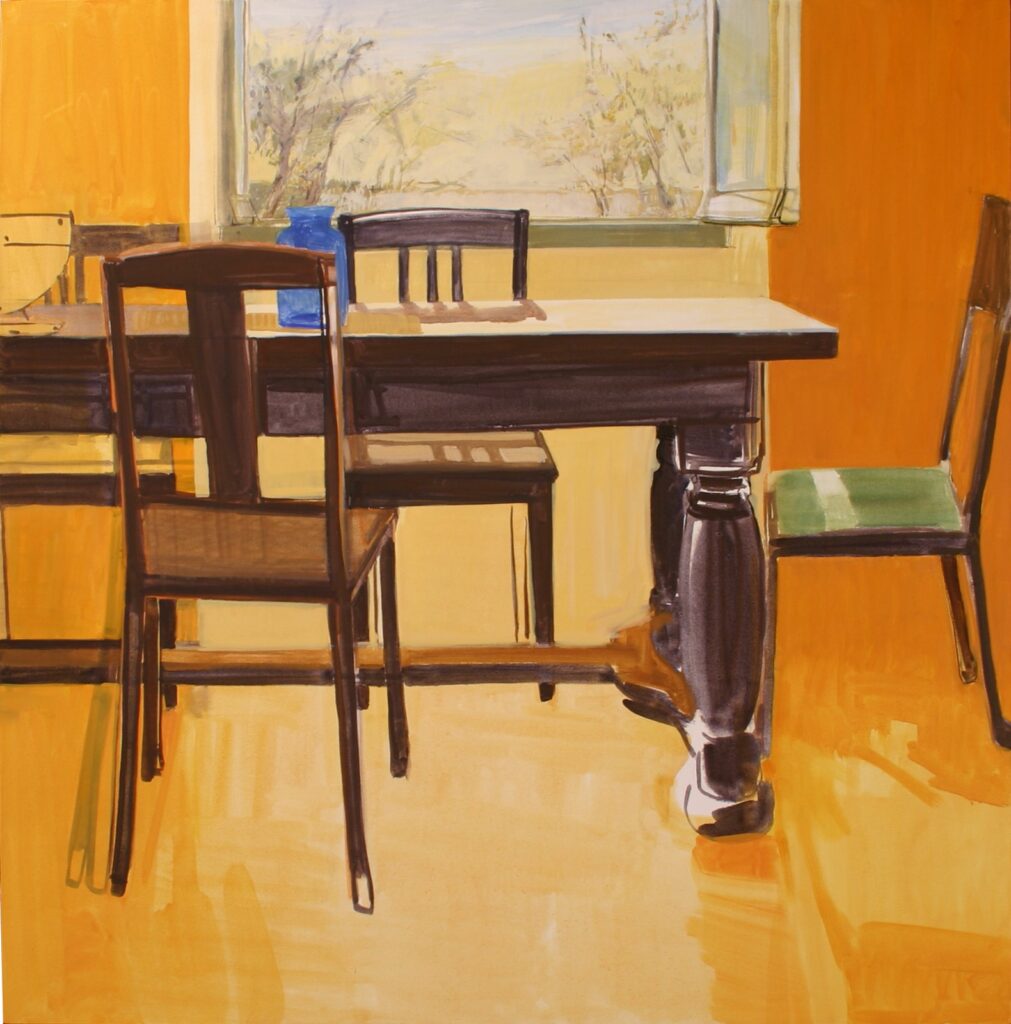Research
While the first half of my career was focused on looking and describing the visible world, this changed in 2003 when I started to engage with scientists and began to explore the meeting place between art and science, the “invisible” world of ideas and practices. Since then I have found ways to be engaged with scientists, initially at the Broad Institute where I developed a new body of work in response to genomics, and more recently with oceanographers and others, co-leading research to explore the intersection of ocean and memory, opening up this space of resonance to ask new questions and find new ways to engage with the world. In doing so I have had to reinvent how I use painting, what it takes hold of in order to represent and in what ways I act and am creative in the world. These collaborations across disciplines have allowed me to connect to a world in flux, the process of image-making itself continually evolving, finding in each reinvention the capacity to engage anew.
The ocean memory project, leverages the dissonance between ocean and memory to open a new space of questions, a new way to understand the ocean. It may well be the focus of my work for the next several years, will involve (among other things): oceanography, music, epigenetics, cartography, microbiology, theater, anthropomorphic inquiry, visual design, and experimental forms of data collection. And of course, painting. I invite you to navigate with me as I probe it’s depths.
2003 - 2018 / Embracing Science
In 2003 an oncologist, Todd Golub, who would go on to co-found the Broad Institute, wrote me email: “I’m an oncologist, an amateur pianist, and am interested in the visual arts. I’ve always been fascinated by how these things communicate”. This struck the chord of my own amateur interest in physics and philosophy, and so we started a discussion about art and science, how they communicate and why. We found early on that rather than defining art and science as polar opposites – where science is objective and art is subjective and therefore cannot communicate – it was much more interesting to define both art and science as attempts to describe the world, from a point of view, within a tradition, with the tools of that tradition.
That initial understanding between us led to my first visit to his lab, his to mine, and eventually to an ongoing relationship with the Broad Institute which Todd co-founded in 2004, and a formal residency for a couple of years. It led also to a deep shift in the focus of my work from looking at the physicality of place to exploring the place of science. I wanted to ask: What are the structures in science that allow us to understand the world; to do research? Are they similar to what happens in art? And is there something there to help us understand how we exist in the worlds today?

1994 - 2004 / The Painted Place
This project is the first of several such attempts to test reality and culture and the connection between the two. This research has informed the work ever since.
My painting bears a material echo of social resonance. It is shaped by the places I have traveled through and by the memories they carry. The projected return to New York City imposes itself as the continuation of a journey which started long before me and of which I am but an active point of passage.
I am both French and American, born in India, and wrote the paragraph above in 1995 as I prepared to move back to New York, from Paris, where I grew up and had then been living for 7 years. Because of this multiple origin it was always obvious to me that what we think of as aesthetics are tightly linked to our cultural and physical history. Not simply that I am from this or that place, but that my personal choices and history allow me to put forth particular forms, colors, rhythms and ideas in which I recognize myself.
In order to test this premise, I developed a project – the painted place – to develop a body of paintings in my family’s country home in the center of France and bring them to New York, where I would finish them.
Throughout the project I would pay attention not only to what I was painting but also what I was reading and seeing, to the rhythms of the land and the city, to the way things were built.